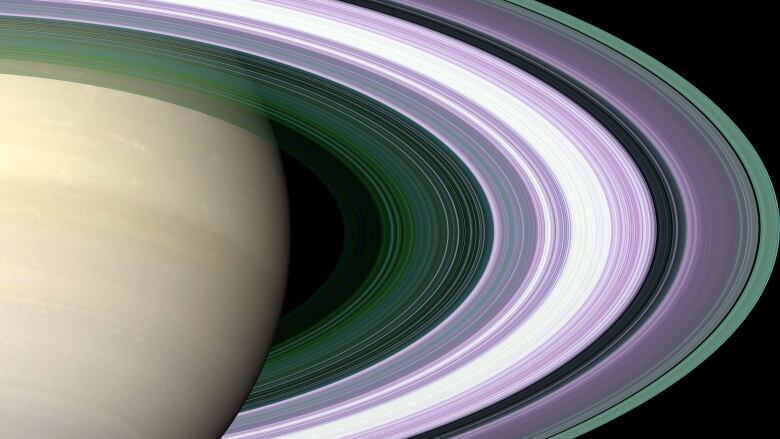NASA's Cassini spacecraft flies between Saturn and rings in historic 1st
Part of spacecraft's 'Grand Finale' tour as mission comes to a close

NASA's Cassini spacecraft ventured Wednesday into the never-before-explored region between Saturn and its rings.
But flight controllers won't know how everything went until Thursday when they are back in touch with the craft.
Cassini was out of radio contact with Earth as it became the first spacecraft to enter the gap between Saturn and its rings. That's because its big dish antenna was manoeuvred face forward to protect science instruments from potentially damaging particles in the rings. The antenna could sustain minor damage like a small hole and still function properly, according to officials.
- Cassini spacecraft to begin 'grand finale' plunging into Saturn
- Saturn's moon Enceladus holds 'food source' for potential life
- Cassini spacecraft captures stunning images of Saturn's rings
"We're in a waiting period right now," said Jim Green, director of NASA's planetary science division. "We won't know for a number of hours until Cassini gets in a position where it can radio back home, and so that's one of those things that keeps us on pins and needles."
If Cassini survives this first round, it will make 21 more crossings before its demise in September. The gap between Saturn's atmosphere and its rings is relatively narrow: 1,900 kilometres.
"We're all crossing our fingers saying, 'Oh, geez, I hope we hear from it' and we will," added guidance and control engineer Joan Stupik.
Launched in 1997, Cassini has been orbiting Saturn since 2004. Because the fuel tank is practically empty, NASA decided on one last dangerous, but science-rich adventure.












_(720p).jpg)


 OFFICIAL HD MUSIC VIDEO.jpg)
.jpg)



























































































